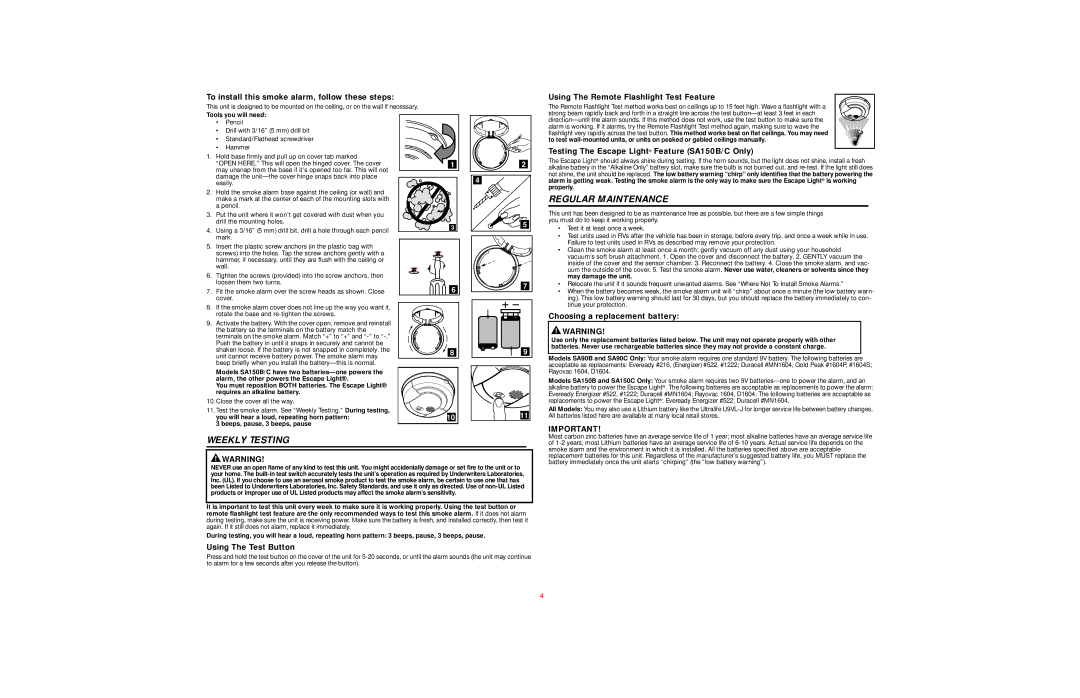SA90C, SA150C, SA150B, SA90B specifications
BRK electronic has established itself as a reliable name in the field of smoke and carbon monoxide detection technology. Among their product line are the SA90C, SA150C, SA90B, and SA150B models, each of which brings unique features and capabilities to ensure optimal safety in residential and commercial spaces.The BRK SA90C is a high-efficiency smoke alarm that utilizes advanced 9V battery technology to deliver reliable performance during emergencies. Its photoelectric sensing technology is notably effective in detecting slow-smoldering fires, which are often more dangerous as they can produce more smoke before becoming fully ignited. This model is designed for easy installation and features a sleek, modern design that can seamlessly blend with various home decors. One of its standout features is the end-of-life warning, which alerts users when the unit needs replacement, ensuring continuous protection.
The SA150C model, on the other hand, expands upon the features of the SA90C by incorporating a dual-sensor technology. This means it can effectively respond to both fast-flaming and slow-smoldering fires, providing comprehensive coverage. It includes a 10-year lithium battery, eliminating the need for frequent replacements and ensuring peace of mind. The SA150C also boasts a test/silence button that allows users to easily verify functionality or silence false alarms.
For settings that require more basic yet effective smoke detection, BRK’s SA90B model serves as a reliable option. It integrates a photoelectric sensor along with a simple battery operation, making it an economical choice for safety without compromising on reliability. The unit’s compact design allows for versatile placement in various living spaces, and it also comes equipped with an easy-to-read LED indicator showing its operational status.
Lastly, the SA150B represents a middle ground between the basic functionality of the SA90B and the advanced features of its more sophisticated counterparts. This model incorporates a combination of technology aimed at effectively detecting a wide range of smoke threats while also being user-friendly. With its intuitive interface and dependable performance, it is designed for those who prioritize both simplicity and efficiency.
In conclusion, the models SA90C, SA150C, SA90B, and SA150B from BRK electronic cater to different needs while ensuring that users receive prompt notifications in the event of smoke or carbon monoxide presence. With advanced technologies and user-friendly designs, these devices stand out as essential safety tools for protecting lives and property. Whether it’s an advanced model with dual sensors or a straightforward one, BRK electronic provides peace of mind for families and businesses alike.

